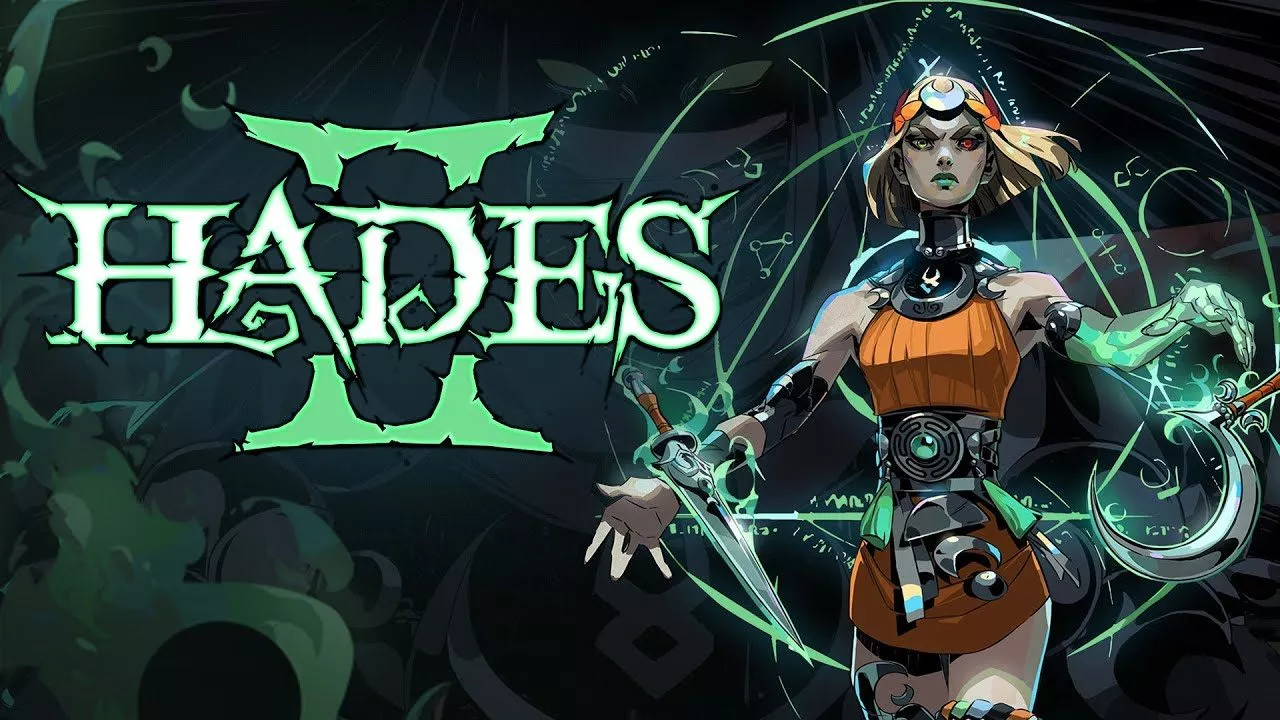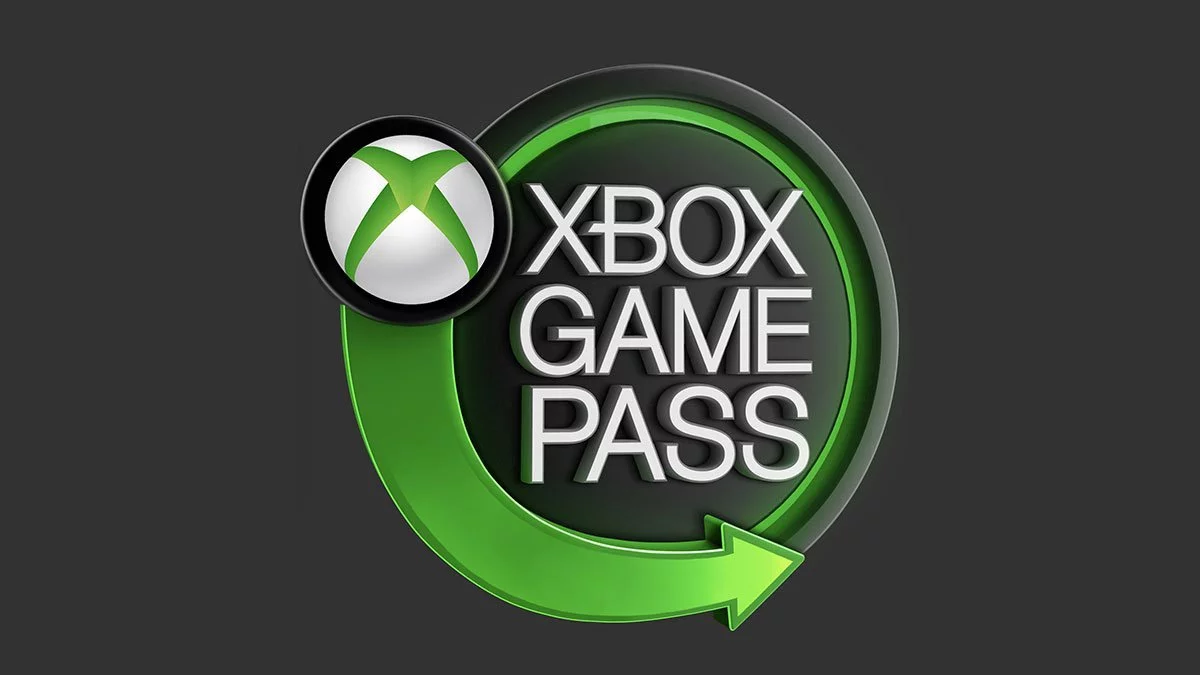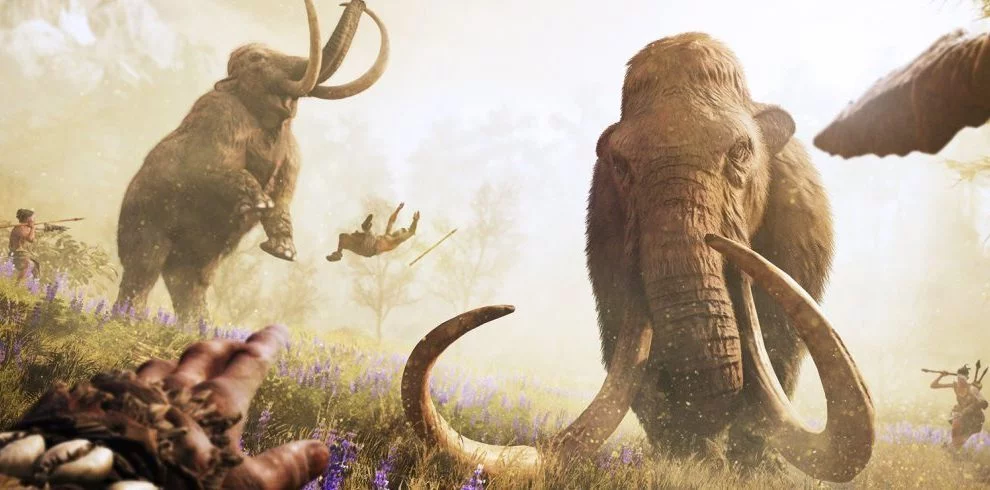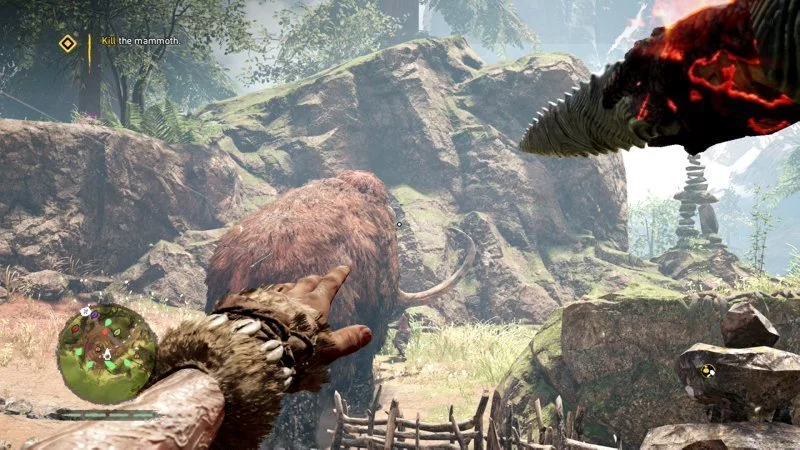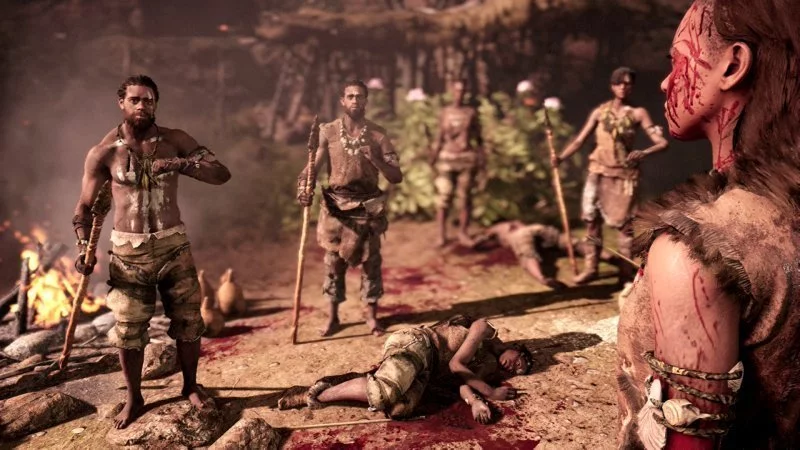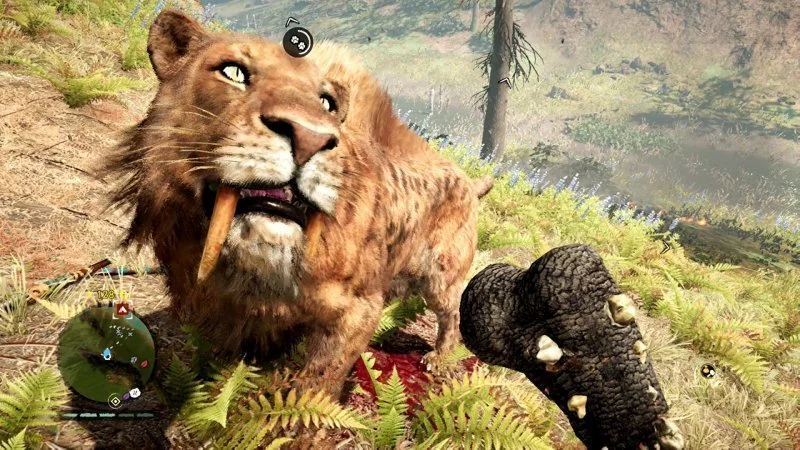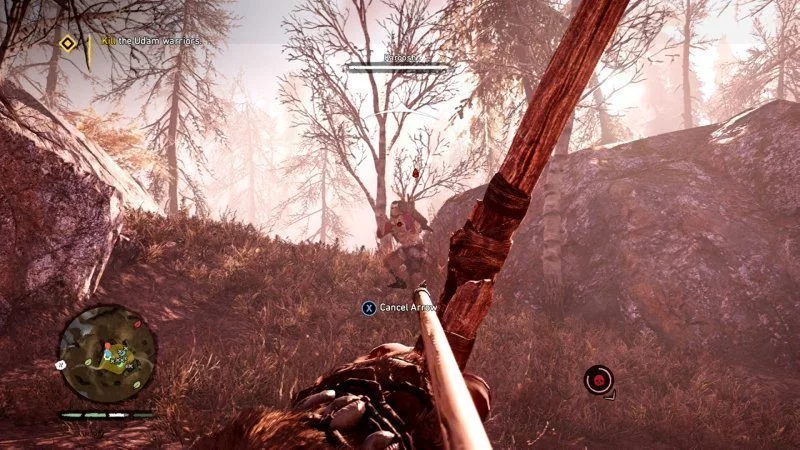Some men hunt for sport, others hunt for food. The only thing I’m hunting for… is an outfit that looks good! – As long as it provides protection from hypothermia in the freezing winds of North Oros. With hunting and living off the land consuming my life of late, that catchy Simpsons’ tune has been in my head all weekend, and in many ways summaries Ubisoft Montreal’s departure from tradition. This is Far Cry: Primal, a spin-off deserving of the tag, while capitalising on the ideal setting for the established blueprint.
The full retail price tag, compared to the budget price of last-gen’s spin off Far Cry: Blood Dragon, has left its marketing in limbo. Is this a full release, or should it be a third of the price? Far Cry fans, allow me to ease the ambiguity and confirm Primal is more than a lavish remix. However, it lacks the innovation and evolution that’s to be expected of Far Cry 5, comfortably slotting in somewhere in-between as a typical spin-off.
Primal is the streamlined survivalist Far Cry. Playing as Takkar, a member of the disheveled Wenja tribe thrown into disarray upon the murder of its leader, new hope emerges when he discovers the power to tame and command wild beasts. As he regroups the Wenja’s dignitaries and builds strength in numbers, Takkar has to improve his own abilities to launch scorching attacks on the dominant Udam and Izila tribes to reclaim the Oros region for the Wenja. While each of the tribes has an egocentric leader, there is no room for megalomaniacs, brainwashed militia and inebriated youths. This is an exercise in survival.
Attention is focused on the core pillars of crafting, combat and community; in-turn ignoring the extravagance, characters and tension the series has become renowned for. To say Primal doesn’t have much of a story would be a fallacy, but I won’t be surprised if it becomes a common complaint amongst naysayers, as it’s weaker than we’ve come to expect. There is no delectably deranged baddie casting a daunting shadow, nor a sense of urgency, even when the subtle plot ups the ante, and the open world comes across dull and isolated off the beaten path.
On the surface, subduing the fanfare goes against the Far Cry charter. However, it’s exactly what the doctor ordered for a series in danger of prematurely becoming a predictable carbon copy of itself – and in practice it’s an unexpended departure that still averts risks. If you’ve played Far Cry before, it’ll feel deeply familiar. While some of the baggage has been cut, and there’s less on offer, there are no changes to how everything plays. Primal doesn’t reinvent the wheel, it just removes it.
The introduction of three fictional languages sets the tone for the 15-20 hour age-old tale. With all characters subtitled, it’s a unique experience in storytelling unlike anything I’ve ever encountered in a video game. Primal lacks the strong characterisation of the previous instalments, but I didn’t realise how often I shift into autopilot, pick up my phone almost obliviously and tune out when cutscenes are triggered. Without being able follow the audible dialogue with my usual fleeting attention, Primal made me take concentrated notice.
The satisfying gameplay loop of hunting, crafting, murdering for XP and unlocking new skills hasn’t changed, but it feels more natural. Hunting for an illusive animal to craft a new holster was an infuriating chore in Kyrat, where there was an economy that should have permitted buying the ruddy thing. In Oros, hunting and scavenging for food, shelter and weapons feels productive, and at times rightly difficult.
Likewise, the brutal combat is appropriately primitive. With just three core weapons – a club, bow and spear – it makes sense for Takkar to become stronger with each kill, be it human or beast; an element that didn’t feel quite right when mowing down an aggressive wolf with an AK-47. I often found myself attempting a covert attack, firing precise arrows to negate the lookouts at small outposts, only to resort to bludgeoning an Udam hunter to death like a man possessed with a burning club, knowing it was either him or me. Each weapon is upgradable to inflict grievous harm and makeshift bombs of fire, poison or bees add an element of surprise.
With hunting at the forefront, the lack of firearms and vehicles suits the otherwise familiar gameplay. Traversing the vertical world with the grappling hook is exactly the same, as is unlocking the map by liberating regions. Radio towers are replaced by bonfires, outposts remain but aren’t as fortified, and the few forts continue to play key roles in the story, when Takkar is strong enough, and use natural formation of the land to mandate a considered approach. A smaller map and fast travel points closer together offset the lack of vehicles, but you’re not restricted to wandering by foot. With his unique abilities, Takkar is able to ride selected animals, including mammoths – a copy of elephants in FC4 – and companion beasts, such as a sabre-toothed tiger or bear.
These beasts must first be tamed; a simple matter of tossing them a steak to become best buds, and can then be called upon at a moment’s notice to do your bidding. Some are frankly pathetic, but those closer to the top of the food chain prove to be ruthless killers on your quest to liberate Oros. In tandem with the spirit owl, allowing a bird’s eye view to tag and attack enemies, it’s possible to murder an entire community of Udam or Izila without stepping foot inside the compound.
In essence, that’s all there is to Far Cry: Primal. It’s a deeply engrossing loop of hunter/gatherer life to craft new items, occasionally befriending a new animal, and killing enemies to reclaim more of the land and unlock new abilities to do it all again against slightly tougher opponents. This has always been the backbone of Far Cry, but by taking away the exuberance and reducing the variety of missions, it becomes the central focus. If you were hoping for something new to accompany the radical departure in setting, you won’t find it here. It’s why Far Cry: Primal is destined to remain a spin-off in the history books. While it’s something vastly different on the surface, deep down it’s a more confined version of the same game many fans only recently played– and it’s the fact Far Cry has essentially become an annual franchise (this is the fourth game since 2012) that hurts the intrinsic similarities. The drastic change in location, period and tone would have been more impactful had the gameplay been afforded time to be missed.
The Far Cry mechanics fit Primal like a glove, crafting in particular is better than anywhere else in the series, but the overall package isn’t as strong. With a weaker world that doesn’t lend itself to exploration, almost no new features aside from taming beasts, and a docile storyline, Primal is totally reliant on its hook of unlocking new items and taming beasts. Suffering from the inescapable Ubisoft syndrome of a cluttered map, there’s less to do than meets the eye, with many locations of interest and side activities almost entirely redundant – there’s not enough offered to make them worthwhile, unless you’re looking for another menial task you’ve done too many times before.
While I lament the omission of intrigue in exploration, it serves a purpose in establishing an eerie atmosphere when Tekkar is away from the safety of his village. Traversing Oros is about survival, not sightseeing. The sounds of the wildlife and unknown rustling, especially at night, create a world where you don’t instinctively feel like the dominant force. There isn’t much to find away from the main missions, aside from some fairly pointless collectibles and negligible XP, but you’ll need to venture out to hunt and scavenge, both day and night.
At worst, Oros feels like a bland last-gen world, and there’s certainly nothing remarkable about it, but when all the components come together, propelled by sound, it becomes survival of the fittest. Unfortunately, enabling hunter vision, which turns items of note and anything that can kill you yellow, negates this. It kills the natural atmosphere, and with such prevalence placed on tracking and hunting, you don’t have a choice about it. Too much of Far Cry: Primal encouraged play with a washed out background and yellow overlay. Animals play a larger role, but in isolation don’t pack the punch they once did. I was terrified when a crocodile plunged into a death roll in Far Cry 3, and even thinking of the snakes makes me uncomfortable. The wildlife still holds up, but has inevitably lost its impact in the fourth game to use what appears to be exactly the same system.
Far Cry: Primal has emerged as a surprising new take on an established formula. It doesn’t do much new, almost nothing to be exact, but what little it does bring to the table and the unexpected setting have crafted an endearing Far Cry fans will adore. The Stone Age is the perfect setting for a selection of existing Far Cry systems, and the advent of three fictional languages injects an element of the unknown, even if the story isn’t a strong point. Ultimately it relies too much on what’s come before it to meet all expectations of the first Far Cry game made exclusively for PS4 and Xbox One. But if you’ve stayed enamoured for Far Cry 3, Blood Dragon and Far Cry 4, and want more of the same, 10,000 BC is the location you never realised you always wanted from Ubisoft Montreal.
Far Cry: Primal was reviewed using a promotional code on Xbox One as provided by the publisher.
Review: Far Cry: Primal
 |
|
The good
|
The bad
|
Want to know more about our scoring scale?
This article may contain affiliate links, meaning we could earn a small commission if you click-through and make a purchase. Stevivor is an independent outlet and our journalism is in no way influenced by any advertiser or commercial initiative.



